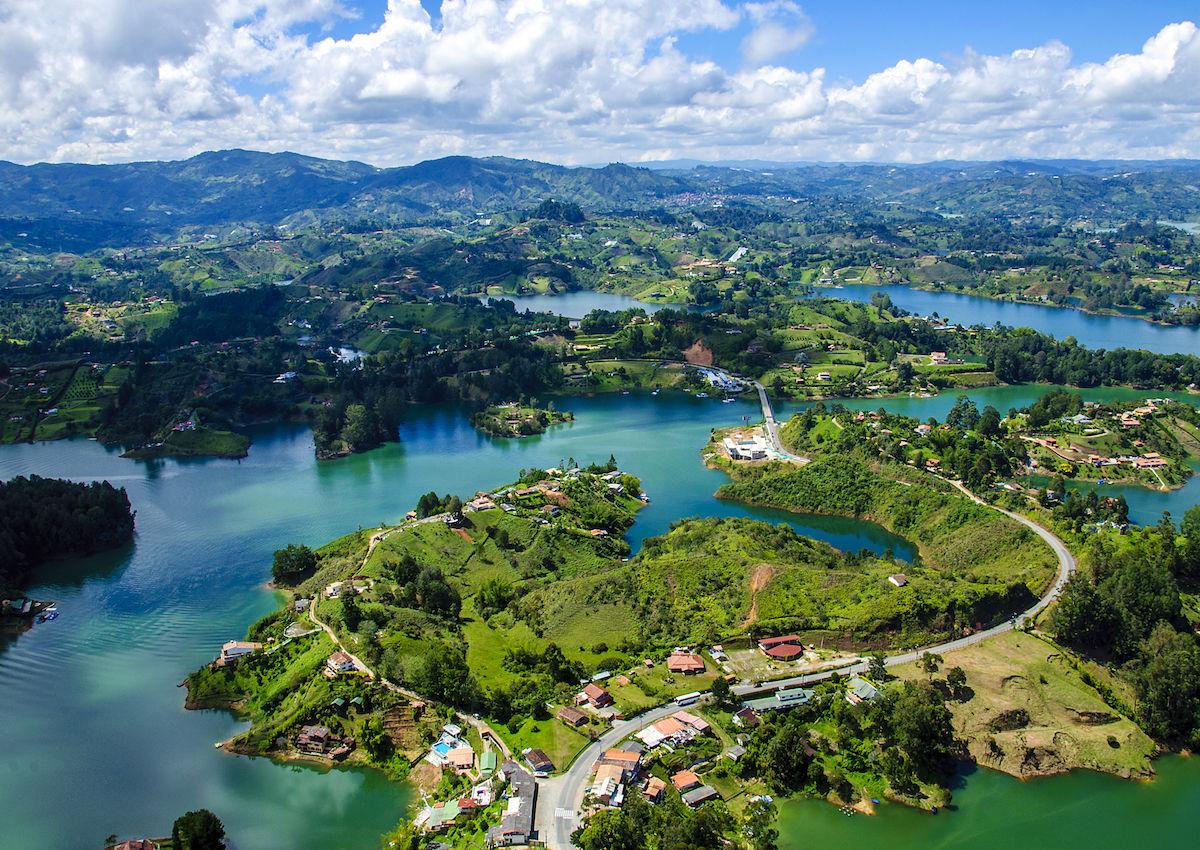D & A

Explore/Explora Colombia

Monserrate
Located 10,341 feet (3,152 meters) above sea level, just east of Colombia’s capital city Bogotá, lies the holy mountain of Monserrate, one of the city’s major tourist attractions. The Monserrate dominates the city: it can be seen from miles around, and from the top you can take in the enormity of Bogotá and its 10 million inhabitants.
Museo del Oro (Gold Museum)
This is a famous museum of pre-Columbian gold and other metals, with the world's largest selection of gold artefacts.
Biblioteca Virgilio barco
The library we both most loved as kids, and never knew we shared in common until we got engaged. It's a beautiful building designed by renown Colombian architect Rogelio Salmona
Simón Bolívar Metropolitan Park
The park is one of the most popular urban parks in the city of Bogotá. The park features two lakes and a large space for concerts and events capable of holding 140.000 people. In total, the Simón Bolivar Metropolitan Park is about 380 to 400 acres. It is bigger than Central Park in New York.
Villa de Leyva
A beautiful touristic colonial town and municipality located 37 kilometres (23 mi) west of the departmental capital Tunja. It is three and a half hours by car or bus from Bogotá. Official Website: http://www.villadeleyva-boyaca.gov.co/Paginas/default.aspx
Cartagena
Cartagena is Colombia’s most famous city on the Caribbean coast. By the sea is the walled Old Town, founded in the 16th century, with squares, cobblestone streets and colorful colonial buildings. With a tropical climate, the city is also a popular beach destination. Reachable by boat are Isla de Barú, with white-sand beaches, and Islas del Rosario, known for their coral reefs.
Parque Nacional Natural Tayrona
Tayrona National Park, in northern Colombia, is a large protected area covering the foothills of the Sierra Nevada de Santa Marta as they meet the Caribbean coast. It’s known for its palm-shaded coves, coastal lagoons, rainforest and rich biodiversity. At its heart, the Pueblito ruins are an archaeological site accessed via forest trails, with terraces and structures built by the Tayrona civilization.
Coffee-Growing Region (Eje Cafetero)
Part of UNESCO's World Heritage list, Colombia's coffee-growing region is "an exceptional example of a sustainable and productive cultural landscape that is unique and representative of a tradition that is a strong symbol for coffee growing areas worldwide - encompasses six farming landscapes, which include 18 urban centres on the foothills of the western and central ranges of the Cordillera de los Andes in the west of the country." (see UNESCO's Website above)